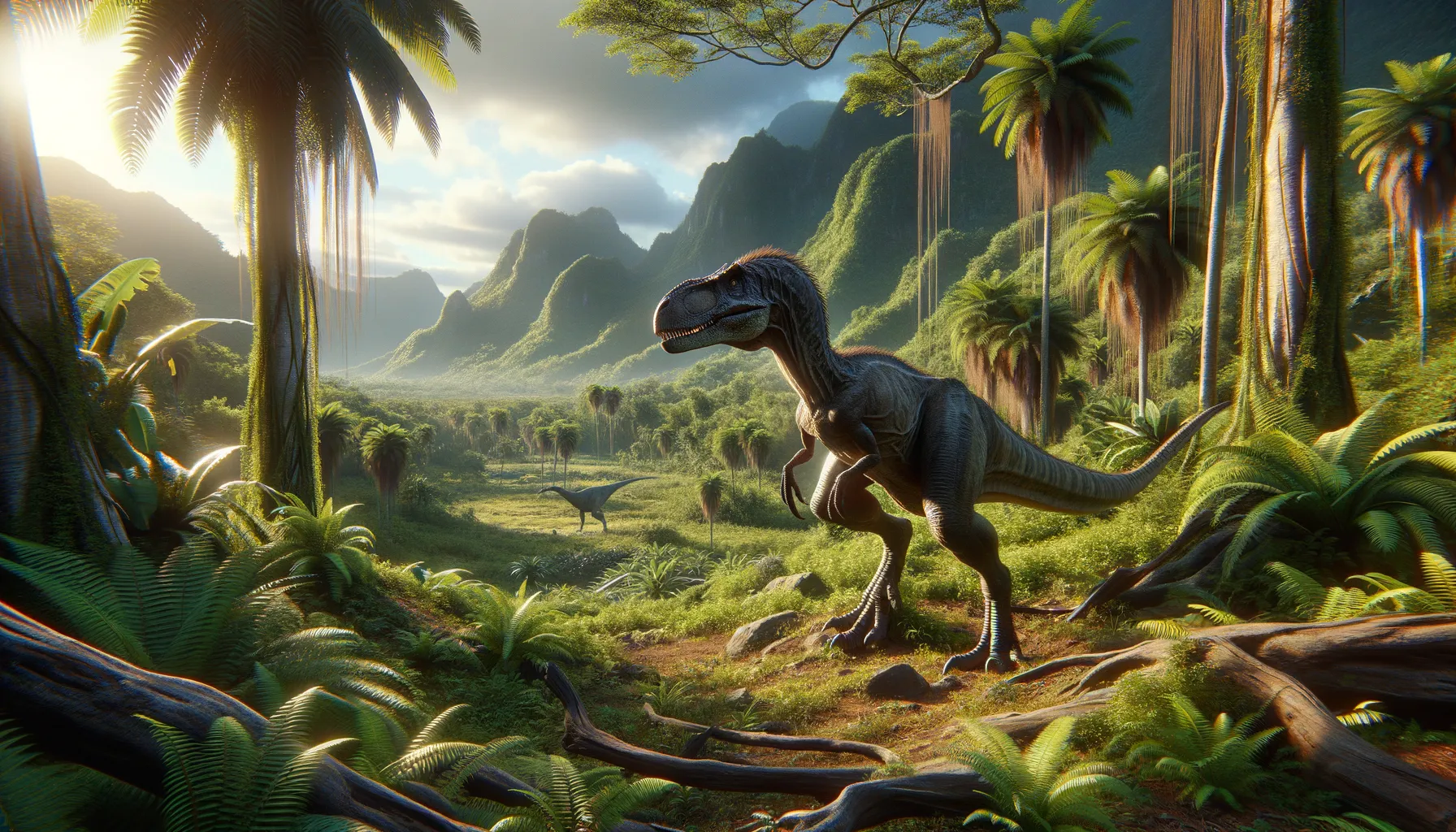
Siamotyrannus
Predatory agility from the Cretaceous era!
Period
Cretaceous
Length
Around 20 to 25 feet long.
Height
Estimated to be about 10 feet tall at the hips.
Weight
Approximately 2,200 to 3,300 pounds.
Siamotyrannus was an early member of the theropod family, living during the Early Cretaceous period. Discovered in Thailand, it belonged to a group of bipedal carnivores known for their predatory prowess. Its features suggest it was an agile hunter, relying on speed and sharp claws. As a large terrestrial predator, it likely played a significant role in its ecosystem, influencing the population dynamics of other species.
Diet
Siamotyrannus was carnivorous, primarily feeding on smaller dinosaurs and possibly scavenging when the opportunity arose. Its diet would have included other herbivorous dinosaurs prevalent in its environment, utilizing its sharp teeth and strong jaws.
Hunting
As an agile predator, Siamotyrannus likely employed ambush tactics, relying on its speed and stealth to surprise prey. It may have hunted alone, focusing on taking down smaller or juvenile herbivorous dinosaurs to sustain itself.
Environmental challenges
During the Cretaceous period, Siamotyrannus faced challenges such as fluctuating climates and volcanic activity that could impact food availability. Competition with other large theropods for resources was likely a constant pressure, necessitating efficient hunting and foraging strategies. Occasional changes in sea level may have altered the landscape, requiring adaptation to new hunting grounds.
Speed
Moderate, likely similar to other large theropods.
Lifespan
Average lifespan would have been around 15-25 years.
First discovery
Discovered in Thailand in 1996.
Fun Facts
- Siamotyrannus is a dinosaur species that lived during the Early Cretaceous period, around 125 million years ago.
- It was discovered in Thailand, making it one of the early tyrannosaurid-like dinosaurs found in Asia.
- Siamotyrannus is believed to have been a medium-sized predator, estimated to be about 21 feet long.
- This dinosaur's name is derived from 'Siam', the historical name for Thailand, and 'tyrannus', meaning tyrant in Latin.
- Siamotyrannus had strong hind limbs, suggesting it was a capable runner, possibly hunting smaller prey.
- It's closely related to the later and more famous Tyrannosaurus rex, though much smaller in size.
- The discovery of Siamotyrannus has helped scientists better understand the evolution and geographic spread of early tyrannosauroids.
Growth and Development
Siamotyrannus, like many theropods, would hatch from eggs and undergo a significant growth spurt in its early years. Juveniles needed to quickly develop hunting skills to survive, likely learning through practice and instinct. Growth rates could be impacted by the availability of food resources, with leaner times slowing development.
Habitat
Siamotyrannus inhabited areas that would be considered semi-arid with seasonal rain, supporting diverse plant and animal life. These environments may have been rich in forests, providing cover and ambush opportunities for hunting. Rivers and water bodies in the area would have supported a variety of prey species.
Interaction with other species
As a top predator, Siamotyrannus would have had limited interactions with other species apart from hunting. Its presence in the ecosystem would have influenced the behavior and population of herbivores. Intra-species interactions may have included competition for territory among males.
Natural lifespan
Siamotyrannus would naturally live for about 15-25 years.
Reproduction
Reproduction practices likely included laying eggs in nests that were carefully guarded by one or both parents. The social structure during nesting is unknown, but parental care would have been crucial to ensure juvenile survival. Gaining size quickly was vital for hatchlings to avoid predation.
Social behaviour
Siamotyrannus might have led a solitary life outside of mating and nesting periods, similar to many other theropods. Social hierarchy, if any, might have been prominent during mating seasons, with males possibly competing for access to females.
Fossil locations
Fossils of Siamotyrannus have been predominantly found in the Phu Wiang National Park in northeastern Thailand. This area is part of the larger region, known for yielding significant vertebrate paleontological discoveries from the Cretaceous period. The finds add valuable insights into the distribution and diversity of early tyrannosaurids.
